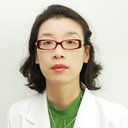Direct comparison of DNA damage, isomerization of urocanic acid and edema in the mouse produced by three commonly used artificial UV light sources.
Ključne riječi
Sažetak
Exposure to sunlight can result in a number of harmful effects, including sunburn, erythema, premature aging of the skin, immune suppression and skin cancer. Studies designed to understand the underlying mechanisms often depend upon the use of artificial sources of UV radiation. Unfortunately, conclusions from different laboratories using different lamps often conflict, and it is entirely possible that the different spectra of sunlights used in each may be a source of conflict. To minimize confounding variables, we employed two of the more commonly used UV light sources, fluorescent sunlamps, such as the FS-40 and Kodacel-filtered FS-40 sunlamps, and a xenon arc solar simulator and compared, in one series of standardized experiments, the effects of each light source on DNA damage, urocanic acid isomerization and edema formation. The dose-response curves, calculated by linear regression or curve fitting were compared. The data indicate that DNA damage and urocanic acid isomerization were more sensitive to shorter wavelengths of UV than longer wavelengths, and the biological endpoint of edema most closely correlated with the induction of DNA damage. The results emphasize the dominance of shorter wavelengths within the UV spectrum in damaging biological tissues, even when the solar simulator, which contains significant amounts of UVA, was used and demonstrate that each light source has a characteristic pattern of induction of biochemical and biological endpoints.


